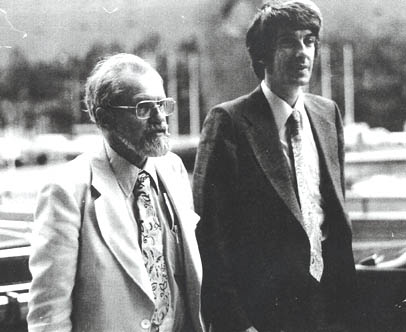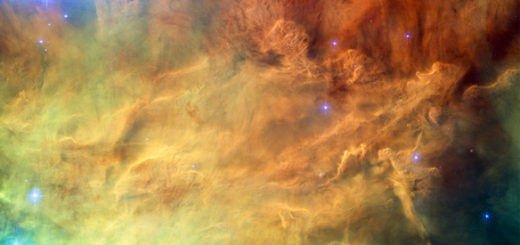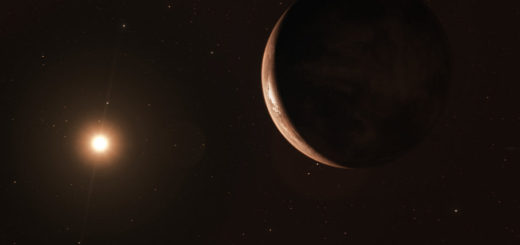Jacques Vallée

Jacques Fabrice Vallée (French: [vale]; born September 24, 1939) is a computer scientist, venture capitalist, author, ufologist and astronomer currently residing in San Francisco, California.
In mainstream science, he began his professional life as an astronomer at the Paris Observatory. Vallée co-developed the first computerized map of Mars for NASA in 1963. He later worked on the network information center for the ARPANET, a precursor to the modern Internet, as a staff engineer of SRI International’s Augmentation Research Center under Douglas Engelbart.
Vallée is also an important figure in the study of unidentified flying objects (UFOs), first noted for a defense of the scientific legitimacy of the extraterrestrial hypothesis and later for promoting the interdimensional hypothesis.
Early life
Vallée was born in Pontoise, France in 1939. He completed undergraduate studies in mathematics at the University of Paris in 1959 and received the equivalent of an M.S. in astrophysics from the University of Lille Nord de France in 1961. He began his professional life as an astronomer at the Paris Observatory in 1961. He was awarded the Jules Verne Prize for his first science fiction novel, Le Sub-espace (1961), published under the pseudonym of Jérôme Sériel.
Academic and business career
He moved to the United States in 1962 and began working as a research associate in astronomy under Gérard de Vaucouleurs at the University of Texas at Austin. While at McDonald Observatory, he compiled NASA’s first detailed informational map of Mars with de Vaucouleurs.
In 1963, Vallée relocated to Chicago, Illinois. He worked as a systems analyst at nearby Northwestern University while continuing to pursue ufological research with his mentor, J. Allen Hynek, the chair of the University’s astronomy department. During this period, he received a Ph.D. in industrial engineering and computer science from the institution in 1967. Thereafter, he was briefly employed by Royal Dutch Shell (in Paris) and the RCA Service Company (in Cherry Hill, New Jersey) as an engineer before joining the Stanford University Computer Center as manager of information systems in 1969. In 1971, Vallée transferred to applied physicist Peter A. Sturrock’s Plasma Research Institute as a computer specialist. Upon learning that Vallée had written several books about UFOs, Sturrock felt a professional obligation to peruse Vallée’s work, prompting his own research in the subject.
Later that year, Vallée left Stanford to join the Engelbart group as a senior research engineer. His tenure at ARC coincided with the group’s immersion in Erhard Seminars Training and other social experiments, ultimately prompting his departure. While at the Institute for the Future as a senior research fellow from 1972 to 1976, he succeeded Paul Baran as principal investigator on the large National Science Foundation project for computer networking, which developed one of the first ARPANET conferencing systems, Planning Network (PLANET),[1] predating the Internet by many years. The technology was spun off into InfoMedia, a startup company founded by Vallée in 1976. Although the firm formed several international spinoffs and partnered with a variety of prominent firms and governmental organizations (including Lehman Brothers, Renault and NASA), it failed to attain long-term profitability.
Following its sale in 1983, Vallée entered the venture capital sphere as a partner at Sofinnova. From 1987 to 2010, he served as a general partner of several funds in Silicon Valley, most notably as the co-founder of the family of three Euro-America Ventures funds in North America and Europe. As a private investor, he continues to serve as executive manager of Documatica Financial, a San Francisco boutique focused on early-stage healthcare and technology startups.[2]
He has also served on the National Advisory Committee of the University of Michigan College of Engineering and was involved in early work on artificial intelligence.
Vallée has authored four books on high technology, including Computer Message Systems, Electronic Meetings, The Network Revolution, and The Heart of the Internet.
Paranormal research
In May 1955, Vallée first sighted an unidentified flying object over his Pontoise home. Six years later in 1961, while working on the staff of the French Space Committee, Vallée claims to have witnessed the destruction of the tracking tapes of an unknown object orbiting the earth. The particular object was a retrograde satellite – that is, a satellite orbiting the earth in the opposite direction to the earth’s rotation. At the time he observed this, there were no rockets powerful enough to launch such a satellite, so the team was quite excited as they assumed that the Earth’s gravity had captured a natural satellite (asteroid). He claims that an unnamed superior came and erased the tape. These events contributed to Vallée’s long-standing interest in the UFO phenomenon. Vallée began to correspond with Aimé Michel (who would become a lifelong mentor and research collaborator) in 1958.
In the mid-1960s, like many other UFO researchers, Vallée initially attempted to validate the popular Extraterrestrial Hypothesis (or ETH). UFO researcher Jerome Clark[3] argues that Vallée’s first two UFO books were among the most scientifically sophisticated defenses of the ETH ever mounted.
However, by 1969, Vallée’s conclusions had changed, and he publicly stated that the ETH was too narrow and ignored too much data. Vallée began exploring the commonalities between UFOs, cults, religious movements, demons, angels, ghosts, cryptid sightings, and psychic phenomena. Speculation about these potential links were first detailed in Vallée’s third UFO book, Passport to Magonia: From Folklore to Flying Saucers.
As an alternative to the extraterrestrial visitation hypothesis, Vallée has suggested a multidimensional visitation hypothesis. This hypothesis represents an extension of the ETH where the alleged extraterrestrials could be potentially from anywhere. The entities could be multidimensional beyond space-time, and thus could coexist with humans, yet remain undetected.
Vallée’s opposition to the popular ETH was not well received by prominent U.S. ufologists, hence he was viewed as something of an outcast. Indeed, Vallée refers to himself as a “heretic among heretics”.
Vallée’s opposition to the ETH theory is summarised in his paper, “Five Arguments Against the Extraterrestrial Origin of Unidentified Flying Objects”, Journal of Scientific Exploration, 1990:
Scientific opinion has generally followed public opinion in the belief that unidentified flying objects either do not exist (the “natural phenomena hypothesis”) or, if they do, must represent evidence of a visitation by some advanced race of space travellers (the extraterrestrial hypothesis or “ETH”). It is the view of the author that research on UFOs need not be restricted to these two alternatives. On the contrary, the accumulated data base exhibits several patterns tending to indicate that UFOs are real, represent a previously unrecognized phenomenon, and that the facts do not support the common concept of “space visitors.” Five specific arguments articulated here contradict the ETH:
unexplained close encounters are far more numerous than required for any physical survey of the earth;
the humanoid body structure of the alleged “aliens” is not likely to have originated on another planet and is not biologically adapted to space travel;
the reported behavior in thousands of abduction reports contradicts the hypothesis of genetic or scientific experimentation on humans by an advanced race;
the extension of the phenomenon throughout recorded human history demonstrates that UFOs are not a contemporary phenomenon; and
the apparent ability of UFOs to manipulate space and time suggests radically different and richer alternatives.
Vallée has contributed to the investigation of the Miracle at Fatima and Marian apparitions. His work has been used to support the Fatima UFO Hypothesis. Vallée is one of the first people to speculate publicly about the possibility that the “solar dance” at Fatima was a UFO. The idea of UFOs was not unknown in 1917, but most of the people in attendance at the Fatima apparitions would not have attributed the claimed phenomena there to UFOs, let alone to extraterrestrials. Vallée has also speculated about the possibility that other religious apparitions may have been the result of UFO activity including Our Lady of Lourdes and the revelations to Joseph Smith. Vallée and other researchers have advocated further study of unusual phenomena in the academic community. They don’t believe that this should be handled solely by theologians.[4][5][6]
As a result of his imprimatur, association with SRI and friendships with Harold E. Puthoff and Central Intelligence Agency analyst Kit Green (who obtained a temporary security clearance for him in 1974), Vallée was intermittently consulted on classified remote viewing research (including the Stargate Project) throughout the 1970s and 1980s. During the early SRI experiments (led by Puthoff and Russell Targ with Green as CIA liaison), he became acquainted with Uri Geller, Edgar Mitchell, Charles Musès, Andrija Puharich, Jack Sarfatti, Arthur M. Young, Edwin C. May, Pat Price and Ingo Swann. In 1973, Doubleday editor Bill Whitehead introduced Vallée to Ira Einhorn, a close confederate of Puharich; their association would span Vallée’s business and paranormal networks until Einhorn was charged with murdering his ex-girlfriend in 1979.
More recently, he has been associated with Robert Bigelow as a consultant to the National Institute for Discovery Science and a member of the scientific advisory board of Bigelow Aerospace.
Film appearance
In 1979, Robert Emenegger and Alan Sandler updated their 1974 UFOs, Past, Present and Future documentary with new 1979 footage narrated by Jacques Vallée. The updated version is entitled “UFOs: It Has Begun”.
Vallée served as the real-life model for Lacombe, the researcher portrayed by François Truffaut in Steven Spielberg’s Close Encounters of the Third Kind.[7] He also attempted to interest Spielberg in an alternative explanation for the phenomenon. In an interview on Conspire.com, Vallée said, “I argued with him that the subject was even more interesting if it wasn’t extraterrestrials. If it was real, physical, but not ET. So he said, ‘You’re probably right, but that’s not what the public is expecting — this is Hollywood and I want to give people something that’s close to what they expect.'”[8]
X-Files
Episode “Jose Chung’s From Outer Space” of X-Files which aired on April 12, 1996 had fake alien pilots, one named Jacques Sheaffer and the other Robert Vallee. According to Robert Sheaffer this was a joke by the X-Files creator Chris Carter to name the characters after Vallee and Sheaffer. Sheaffer further states that “the M.P. who later arrested them [the characters] was Sgt. Hynek”, a reference to ufologist J. Allen Hynek.[9]
Interpretation of the UFO evidence
Vallée proposes that there is a genuine UFO phenomenon, partly associated with a form of non-human consciousness that manipulates space and time. The phenomenon has been active throughout human history, and seems to masquerade in various forms to different cultures. In his opinion, the intelligence behind the phenomenon attempts social manipulation by using deception on the humans with whom they interact.
Vallée also proposes that a secondary aspect of the UFO phenomenon involves human manipulation by humans. Witnesses of UFO phenomena undergo a manipulative and staged spectacle, meant to alter their belief system, and eventually, influence human society by suggesting alien intervention from outer space. The ultimate motivation for this deception is probably a projected major change of human society, the breaking down of old belief systems and the implementation of new ones. Vallée states that the evidence, if carefully analyzed, suggests an underlying plan for the deception of mankind by means of unknown, highly advanced methods. Vallée states that it is highly unlikely that governments actually conceal alien evidence, as the popular myth suggests. Rather, it is much more likely that that is exactly what the manipulators want us to believe. Vallée feels the entire subject of UFOs is mystified by charlatans and science fiction. He advocates a stronger and more serious involvement of science in the UFO research and debate.[10] Only this can reveal the true nature of the UFO phenomenon.
Books
Finance
Vallée, Jacques (January 2001). The Four Elements of Financial Alchemy: A New Formula for Personal Prosperity (1st paperback ed.). Ten Speed Press. p. 195 pp. ISBN 1-58008-218-1.
Novels
Vallée, Jacques; Tormé, Tracy (June 1996). Fastwalker (paperback ed.). Berkeley, California, U.S.A.: Publ. Frog Ltd. p. 220 pp. ISBN 1-883319-43-9.
Vallée, Jacques (January 2006). Stratagème (in French) (paperback ed.). p. 256 pp. ISBN 2-84187-777-9.
Vallée, Jacques (July 2007). Stratagem (hardcover ed.). p. 220 pp. ISBN 978-0-615-15642-2.
Jacques Vallée has also written four science fiction novels, the first two under the pseudonym of Jérôme Sériel:
Le Sub-Espace [Sub-Space] (1961)
Le Satellite Sombre [The Dark Satellite] (1963)
Alintel (as Jacques Vallée) (1986) (provided partial basis for Fastwalker)
La Mémoire de Markov (as Jacques Vallée) (1986)
Technical books
Computer Message Systems (hardcover ed.). New York: McGraw-Hill (Data Communications Book Series). August 1984. p. 163 pp. ISBN 0-07-051031-8.
Johansen, Robert; Valles, Jacques; Spangler, Kathi (July 1979). Electronic Meetings: Technical Alternatives. Addison-Wesley Series on Decision Support (1st hardcover ed.). Addison-Wesley Publ. Co., Inc. p. 244 pp. ISBN 0-201-03478-6.
The Network Revolution: Confessions of a Computer Scientist (paperback ed.). Berkeley, Calif.: And/Or Press. 1982. p. 213 pp. ISBN 0-14-007117-2.
The Heart of the Internet
UFO books
Anatomy of a Phenomenon: Unidentified Objects in Space – a Scientific Appraisal (1st hardcover ed.). NTC/Contemporary Publishing. January 1965. ISBN 0-8092-9888-0.
Reissue: UFO’s In Space: Anatomy of A Phenomenon (paperback reissue ed.). Ballantine Books. April 1987. ISBN 0-345-34437-5.
Challenge to Science: The UFO Enigma – with Janine Vallée (NTC/Contemporary Publishing, 1966)
Passport to Magonia: From Folklore to Flying Saucers. Chicago, IL, U.S.A.: Publ. Henry Regnery Co. 1969.
The Invisible College: What a Group of Scientists Has Discovered About UFO Influences on the Human Race (1st ed.). Dutton. 1975.
The Edge of Reality: A Progress Report on Unidentified Flying Objects – Jacques Vallée and Dr. J. Allen Hynek (Quality Books, 1975)
Messengers of Deception: UFO Contacts and Cults (paperback ed.). And/Or Press. June 1979. ISBN 0-915904-38-1.
Dimensions: A Casebook of Alien Contact (1st ed.). Contemporary Books. April 1988. ISBN 0-8092-4586-8.
Confrontations – A Scientist’s Search for Alien Contact (hardcover ed.). Ballantine Books. March 1990. ISBN 0-345-36453-8.
Revelations: Alien Contact and Human Deception (1st ed.). Ballantine Books. September 1991. ISBN 0-345-37172-0.
UFO Chronicles of the Soviet Union: A Cosmic Samizdat (Ballantine Books, 1992)
Forbidden Science: Journals, 1957-1969 (North Atlantic Books, 1992)
Forbidden Science, Volume Two: Journals, 1970-1979 — California Hermetica (Documatica Research, LLC, 2009)
Wonders in the Sky: Unexplained Aerial Objects from Antiquity to Modern Times (paperback ed.). Tarcher. 2010. ISBN 1-58542-820-5.
Forbidden Science, Volume Three: Journals, 1980-1989 — On the Trail of Hidden Truths (Lulu Press, 2016)



 Creators of mankind
Creators of mankind Description of “Tall white aliens”
Description of “Tall white aliens” Where they came from?
Where they came from? About hostile civilizations
About hostile civilizations The war for the Earth
The war for the Earth “Tall white aliens” about eternal life
“Tall white aliens” about eternal life Video: “Nordic aliens”
Video: “Nordic aliens” Aliens
Aliens Alien encounters
Alien encounters The aliens base
The aliens base UFO
UFO Technology UFO
Technology UFO Underground civilization
Underground civilization Ancient alien artifacts
Ancient alien artifacts Military and UFO
Military and UFO Mysteries and hypotheses
Mysteries and hypotheses Scientific facts
Scientific facts


















